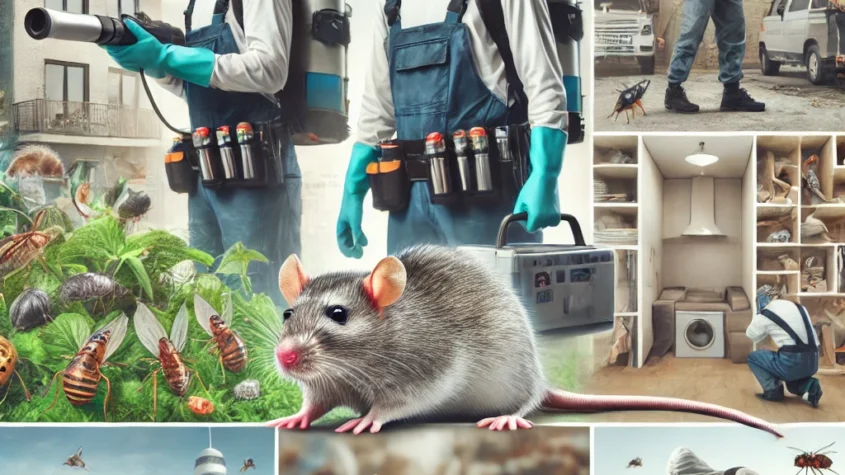
Rats can pose significant health risks and damage to property, making effective extermination essential. In Vancouver, hiring a professional rat exterminator Vancouver can provide efficient solutions to eliminate these pests and prevent future infestations. Understanding the signs of a rat problem and knowing when to call in experts can save homeowners time, money, and stress.
In this bustling city, numerous extermination services are available, each claiming to deliver results. However, the key lies in selecting a reputable pest control expert who offers tailored strategies based on the specific needs of the property. From inspection to eradication, the right exterminator ensures a comprehensive approach to pest management.
Learning about the methods professionals use and the importance of prevention can empower property owners to maintain a rat-free environment. Effective pest control not only addresses current issues but also safeguards homes from potential re-infestation.
Understanding Rat Infestations in Vancouver
Rat infestations are a significant concern in Vancouver, affecting both residential and commercial properties. Recognizing the species, signs of a problem, and health risks associated with rats is crucial for effective management.
Identifying Common Vancouver Rat Species
Vancouver is home to several rat species, primarily the Norway rat and the black rat. The Norway rat is larger, often brown or gray, with a blunt nose and a thick body. They prefer burrowing close to foundations and sewers. In contrast, the black rat is smaller and more agile, typically black or dark brown, with a pointed nose and long tail. It often resides in upper areas and trees.
Understanding these distinctions helps in targeting control measures effectively. To identify these species, look for physical characteristics, habitat preferences, and behavioral differences. A local exterminator can assist in confirming the species present, enabling tailored interventions.
Signs of a Rat Problem
Recognizing signs of a rat infestation is critical for timely action. Gnaw marks on food packaging or furniture can indicate rat activity. Additionally, droppings, which resemble dark grains of rice, are a clear sign of their presence.
Other indicators include nesting materials like shredded paper or fabric, often found in hidden areas. Unusual sounds in walls or ceilings, particularly at night, may also suggest rodent activity.
Setting traps or monitoring devices can help confirm the presence of rats. Regular inspections are essential in detecting these signs early to prevent a larger infestation.
Health Risks Associated with Rats
Rats pose several health risks, primarily through the transmission of diseases. They can carry pathogens such as Hantavirus, Leptospirosis, and Salmonella, which can affect humans. Contact with rat droppings or urine can lead to serious illness.
In addition, rats can attract other pests, such as fleas and ticks, compounding health risks. Moreover, they can contaminate food supplies, leading to further health hazards.
It is essential to address any rat presence immediately, employing professional extermination services. This approach mitigates health risks and ensures a safer living environment.
Choosing a Professional Rat Exterminator
Selecting a qualified rat exterminator is crucial for effectively managing a rodent problem. This involves ensuring the exterminator has the proper credentials and employs effective techniques, alongside offering preventative measures.
Licensed and Insured Exterminators
Choosing a licensed and insured exterminator is essential. A license indicates that the exterminator has completed necessary training and adheres to regulations. This certification helps assure customers of their expertise.
Insurance protects homeowners from liability in case of accidents during the extermination process. Verify that the exterminator carries both general liability and workers’ compensation insurance. Request to see documentation before initiating services to avoid potential complications.
Extermination Techniques and Equipment
An effective exterminator should utilize a variety of techniques and equipment tailored to the specific infestation. Common methods include:
- Trapping: Snap traps and humane traps can both be effective, depending on preference.
- Baiting: Rodenticides can be used in controlled environments to reduce rat populations.
- Fumigation: This method may be necessary for severe infestations.
Ensure the exterminator uses state-of-the-art equipment and environmentally safe products. Inquire about their approach and the chemicals used in the process, as safety is paramount in residential areas.
Preventative Measures and Aftercare
A professional exterminator should do more than just eliminate existing rats. Preventative measures are critical to maintaining a rat-free environment. These may include:
- Sealing entry points: Identifying and closing gaps, holes, and cracks in structures.
- Sanitation: Reducing food and water sources that attract rats.
- Regular inspections: Ongoing assessments can catch potential issues early.
Aftercare includes follow-up visits and advice on maintaining a rodent-free environment. It’s important for exterminators to offer guidance on long-term prevention strategies, ensuring that the risk of reinfestation is minimized.
Fitter First: Unlocking Your Potential for a Healthier Lifestyle
Fitter First is a concept focusing on optimizing one’s physical well-being through a struc…





